Insurance companies and injured plaintiffs have been battling over uninsured motorist and underinsured motorist claims on several fronts for decades. In the last two years, however, considerable uncertainty sprang up around litigating damages. When you have gone to trial on a UM contract claim, and a jury has determined the defendant’s liability and the plaintiff’s damages, can the insurance company get a do-over and force the plaintiff to litigate damages all over again in a bad faith claim against the insurer? Of course not, answered several federal and state courts recently.
Maybe that seems obvious, and indeed, this should not be that complicated. Uninsured motorist insurance is ubiquitous in Florida. For good reason: UM coverage is supposed to protect insureds who are injured in auto accidents caused by other drivers without insurance. It is especially important here in Florida where, even though auto insurance is required, some estimates say that 24% of drivers on the road don’t have it at all. Though UM insurance is not mandatory, it is a default part of every auto bodily injury liability policy issued in Florida unless specifically rejected by the buyer. So the law in this area should be well developed and settled.
For a long time, it generally was. Not just from the bad faith law arising from UM cases, but in statutory law as well. Ever since 1992—back when Hugh Culverhouse still owned the Tampa Bay Buccaneers—the UM statute, Section 627.727, has provided that damages for a bad faith claim under Section 624.155 would include all damages caused by the original loss, including any amount in excess of the policy limits.
Until two years ago. When GEICO lost an appeal of a $30 million jury verdict against it, a single judge’s concurring opinion stated that he did not review the entire verdict because the judgment had been limited to the $50,000 policy limits. Bottini v. GEICO Gen. Ins. Co., 93 So. 3d 476, 477-78 (Fla. 2d DCA 2012) (Altenbernd, J., concurring). No one joined the concurring opinion; as a personal belief, it was not binding and had no precedential value.
But then a federal judge, following the concurring opinion in Bottini, ruled that the verdict establishing an injured plaintiff’s damages in the underlying case meant nothing; the plaintiff in an insurance bad faith claim had to try damages all over again in federal court. King v. Gov’t Emps. Ins. Co., No. 8:10–cv–977–T–30AEP, 2012 WL 4052271 (M.D. Fla. Sept. 13, 2012). Another federal court followed suit, Harris v. Geico General Insurance Co., 961 F. Supp. 2d 1233 (S.D. Fla. 2013), and a long well-settled aspect of UM bad faith litigation became a bit less clear.
But in the last four months, courts have scrutinized and rejected the Bottini concurring opinion and King. In June 2014, a federal district judge reversed a magistrate judge’s order granting a motion to compel damages discovery in a GEICO insurance bad faith action when a jury had already determined the injured plaintiff’s damages in the underlying action. See Batchelor v. Geico Cas. Co., No. 6:11-cv-1071-Orl-37GJK, 2014 WL 3906312 (M.D. Fla. June 9, 2014). The court explained why the concurring opinion was contrary to Florida law and the Bottini majority decision itself. It also summarized why a damages do-over was an awful idea:
Forcing plaintiffs to relitigate their damages in first-party bad faith actions would have serious ramifications, including: running the almost-certain risk of inconsistent verdicts; potentially raising comity issues between state and federal courts; creating a discrepancy (surely unintended and definitely illogical) between first- and third-party bad faith claims; placing an inexplicable burden on plaintiffs to prove their cases twice; and causing a great deal of judicial inefficiency.
Last month, Florida’s Fourth District Court of Appeals agreed with this reasoning. GEICO General Insurance Co. v. Paton, Case No. 4D12-4606, 2014 WL 4626860 (Fla. 4th DCA Sept. 17, 2014). What’s more, Paton is binding in Florida; every trial court must follow its well-reasoned holding unless another district court of appeals directly addressing the same issue reaches a different conclusion.
The plaintiff there amended her complaint to add a claim for insurance bad faith after she won an excess verdict at the UM trial. GEICO made its same argument for forcing the plaintiff to prove her damages all over again. But the trial court held that the jury’s verdict in the UM trial was binding. The Fourth District affirmed, explaining why GEICO’s argument and the Bottini concurring opinion’s suggestion that GEICO lost appellate review of the entire damages verdict were wrong: “The final judgment subsumes the earlier order’s resolution of the jury’s damage determination so that the total amount is an immediately appealable issue.”
The Paton court agreed with the Batchelor court that there was no legal reason or public policy to justify the damages do-over: “Forcing retrial of a plaintiff’s damages at a first party bad faith trial, as Geico urges, is such bad policy that we do not glean even a hint of its existence in any case the Supreme Court has decided in this area.”
A week later—and a little more than two years after the Bottini concurring opinion started causing mischief—it was the Bottini bad faith claim in federal court that struck another blow against the King rule. Bottini v. GEICO Gen. Ins. Co., No. 8:13–CV–365–T–17AEP, 2014 WL 4749054 (M.D. Fla. Sept. 23, 2014). There, the court entered a partial summary judgment order against GEICO, holding that it “was not denied appellate review of the amount of damages awarded to Plaintiff in the Underlying Action.” Accordingly, when the jury in the case concludes that GEICO acted in bad faith, the $29 million excess verdict will be part of the damages awarded to Bottini.
These decisions, including one that is binding on trial courts throughout Florida, should signal a return to well-settled law over damages in UM claims – and an end to forcing plaintiffs to litigate their damages all over again when they have been hurt by an insurance company’s bad faith.
If you’re a lawyer helping someone who has been hurt, you can download forms to bring an insurance bad faith count and an uninsured motorists benefits count together at this link: https://www.swoperodante.com/login/referring-attorneys-login/.)














